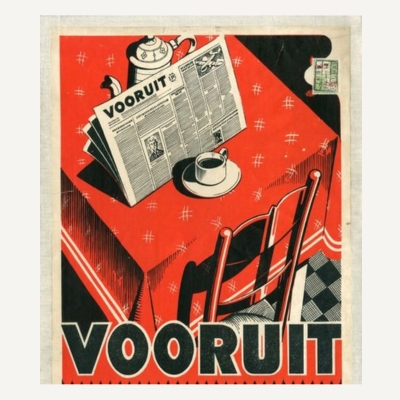Innovatief onderzoek
Kranten zijn een essentiële bron van informatie. Dat is zo voor de krant van vandaag, maar misschien nog meer voor die van gisteren. Dankzij de digitalisering van kranten blijft dit hedendaags erfgoed bewaard. Tegelijk opent digitalisering perspectieven voor innovatief onderzoek. De kranten zullen doorzoekbaar zijn met behulp van Optical Character Recognition, een toepassing waardoor in de gedigitaliseerde bestanden gezocht kan worden op bepaalde woorden en zoektermen. Dit laat kwantitatief of lexicografisch onderzoek toe, iets dat voorheen bijzonder tijdrovend of gewoonweg onmogelijk was.
Kwetsbaar erfgoed
Erfgoedinstellingen doen er alles aan om hun kranten te beschermen tegen de tand des tijds. Helaas worden die niet op het beste papier gedrukt. Voor de lezer hoeft de krant immers niet langer dan een dag mee te gaan. Voor de bewaring op lange termijn is de slechte papierkwaliteit echter een ramp: oude kranten vallen soms letterlijk in snippers uiteen. Digitaliseren zorgt ervoor dat de informatie bewaard blijft. Het nieuws van vroeger biedt namelijk inzicht voor wie wil begrijpen hoe onze maatschappij vandaag vorm gekregen heeft.
Een legendarische krant
Van socialistische spreekbuis evolueerde Vooruit na de Eerste Wereldoorlog tot een brede, populaire krant met een gevarieerd aanbod aan rubrieken. De namen van sommige redacteuren spreken nog altijd tot de verbeelding: schrijver Louis-Paul Boon, kunstpaus Paul-Gustave Van Hecke, huistekenaar Frits Van den Berghe … Vooruit is niet alleen een rijke historische bron voor de politieke en sociaaleconomische geschiedenis, maar evengoed voor de culturele geschiedenis en die van het dagelijks leven.
Gedragen door een gemeenschap
Dat erfgoedgemeenschappen zich sterk betrokken voelen bij hun eigen verleden hoeft niet te verwonderen. De krant Vooruit was in Gent en bij uitbreiding in Vlaanderen voor vele generaties niet alleen een dagelijkse bron van informatie, maar ook een gids die de actualiteit duiding en betekenis gaf. Amsab-ISG heeft zich voor de financiering van dit digitaliseringsproject met succes kunnen wenden tot deze gemeenschap








